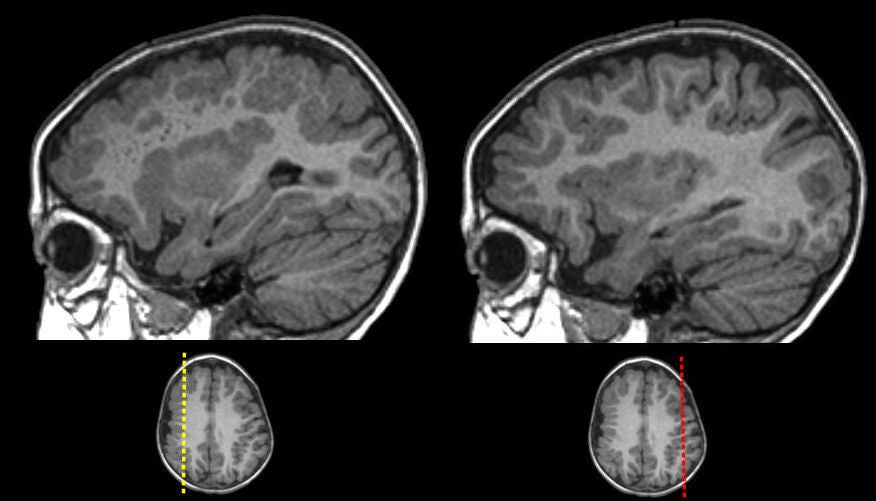
|
A 2 year-old boy underwent an evaluation for developmental delay and a mild left hemiparesis. |

![]()
| Lissencephaly / Polymicrogyria / Pachygyria:
MP-RAGE parasagittal MRI scans. Contrast the right parasagittal cut
(yellow dashed line) with the left parasagittal cut (red dashed line).
Note that on
the right side, the sulci are not well developed, the gray and
white matter are reduced, and many of the gyri are very small. This
is an example of a neuronal migration disorder; in this case,
polymicrogyria.
Neuronal migration disorders are a group of congenital disorders caused by impaired migration of neurons in the developing brain. Neuronal migration normally occurs during the second month of gestation. If the signals that guide neurons are impaired, a variety of structural defects may occur, including: • Lissencephaly In lissencephaly, there is a complete absence of gyri and sucli, with the surface of the brain appearing perfectly smooth. These children typically have severe mental retardation with microcephaly and seizures. Pachygyria is a milder variant of lissencephaly, characterized by a thickened cortex and large, broad gyri. |
Revised
11/23/06
Copyrighted 2006. David C Preston